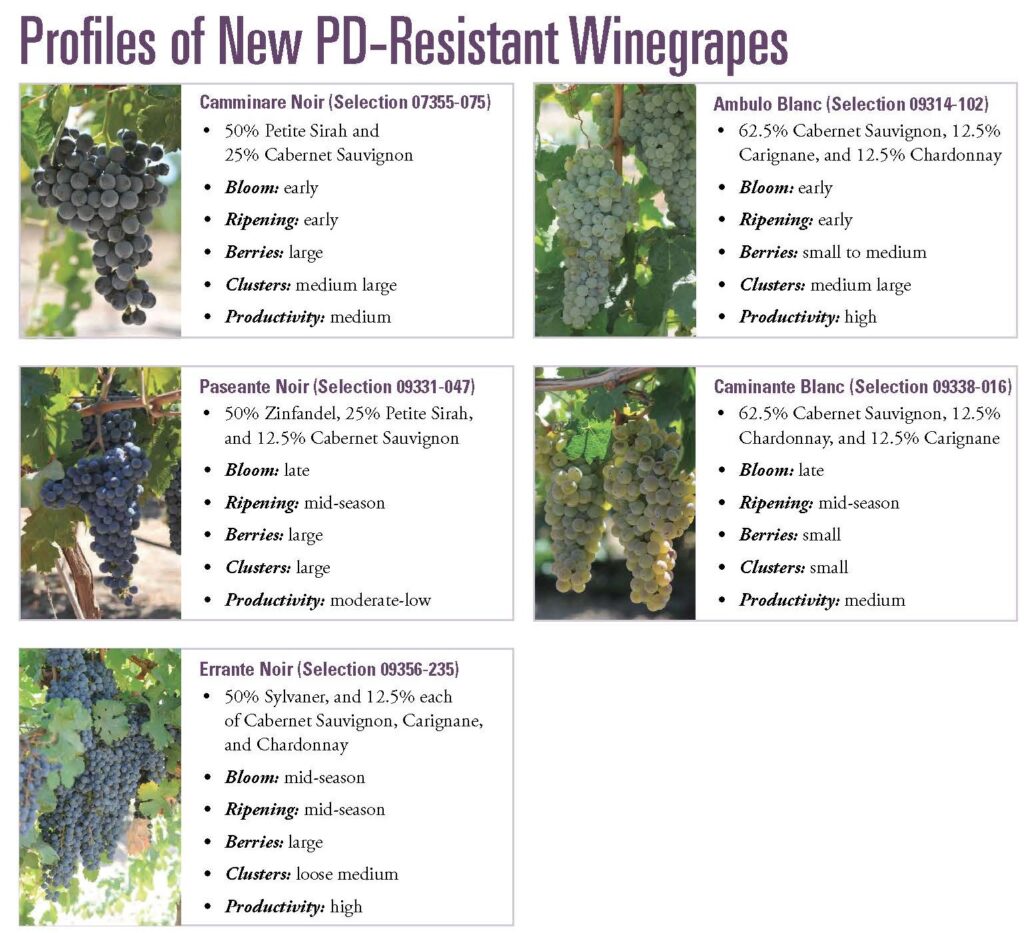Last month, the Pierce’s Disease/Glassy Winged Sharpshooter Board in the US released its Winter 2022 Newsletter, which included an article about their Pierce’s Disease-resistant grapevines.
These vines are designed to particularly assist growers facing disease pressure in riparian areas and in areas where populations of the glassy-winged sharpshooter (GWSS) are high.
This breeding, as well as focusing on vines that stay alive and that don’t act as a reservoir for Pierce’s Disease (PD), has also included a strong focus on producing quality wine. It is suspected these vines could be produced as single varietals or act as blenders.
Using traditional breeding methods over the past 20 years, Dr. Andrew Walker at the University of California, Davis, has bred and patented five varieties for PD resistance to date. These include two whites and three reds. More varieties are in the pipeline.
These varieties were bred through the crossing of Vitis arizonica, a grapevine species from the southwestern US and northern Mexico, which carries a single dominant gene for resistance to PD, with Vitis vinifera.
After four generations of crossing, most of the varieties are now 97% Vitis vinifera. Extensive greenhouse and in-field testing has been undertaken as well as sensory panels to analyse the wine. The PD/GWSS Board has invested more than $34.3 million in research since 2001 to find solutions to PD, including the funding of this breeding work.
“The research team at UC Davis continues to expand the PD-resistance breeding program, focusing on broadening the Vitis vinifera background, stacking PD-resistance genes from multiple sources, adding powdery mildew resistance, and breeding to adapt to a changing climate,” the newsletter article said.
These grapevines are not yet available in Australia.
